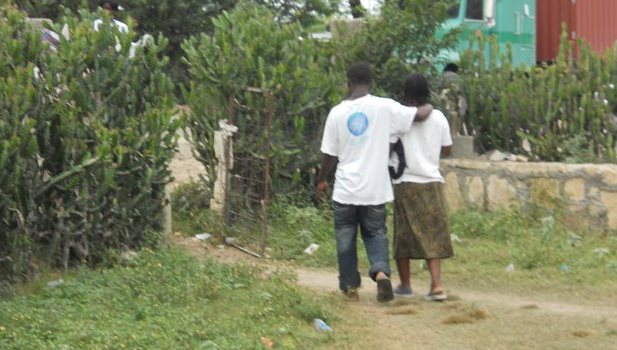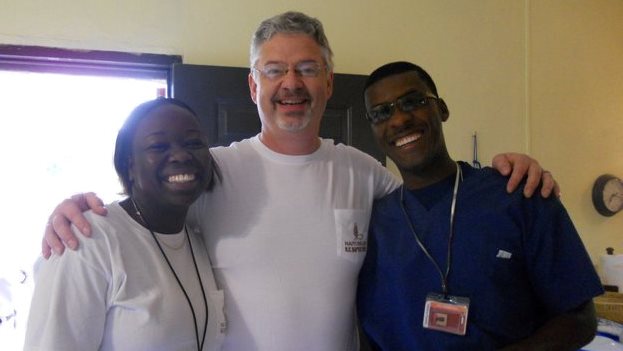This is part 9 of the “Eleven Days in Haiti” series that started here: https://fbcbridgeport.org/eleven-days-haiti-part-1-series-intro. Be sure to get caught up if you missed a prior post!
DAY 7, PART 2- “LIVES SAVED, WHILE YOU WAIT”
My shift was not spent entirely in the friendly, tarp-walled, gravel-floored pharmacy. I did assist in oversight of the Oral Rehydration Tent, which is where those not sick enough to need IV treatment can sometimes recover by drinking a solution providing clean water, minerals and carbohydrates. Oral antibiotics are also given. At certain times, I was needed in the Triage Tent to help stabilize new patients and start their IVs. This was way out of my comfort zone but I am pleased to have been able to assist my cousin Dan, who being a career emergency medicine specialist, was in his element. He is a fearless, confident professional in whom I have the utmost trust. Dan has taught me a lot and I would do anything for him in spite of the frequent reminders of the Stan Laurel comment “Here’s another nice mess you’ve gotten me into.” In triage, I saw many patients delivered to the facility in a “tap-tap”, the local equivalent of a taxi. Most were carried in, limp and nearly lifeless on a piece of filthy canvas stretched between two boards. Unable to walk, or even stand, all patients are transferred to a “cholera cot”, a narrow piece of the familiar blue tarp stretched across a 2×4 frame with a large hole cut in the center. Placed beneath that hole is a plastic bucket. Another bucket is placed to one side of the cot, near the head of the patient. The debilitating weakness caused by the uncontrollable persistent nausea and diarrhea means that most victims cannot make it to one of the numerous portable toilets, which necessitates the design of the cholera cots. Aggressive rehydration is the key to treatment, so large gauge IV’s are started in each arm of the patient using Lactated Ringer’s solution to provide fluid and electrolytes. The familiar drip, drip, drip of IV’s that we see in our hospitals will never do. This treatment requires a wide open flow rate of fluids into the vein. As a result, even the sickest of persons shows dramatic improvement in the next 30-45 minutes. Most are then transferred to another of the nearly 200 cholera cots in the main part of the facility where they are monitored by physicians and nurses. Nearly all are released in 48-96 hours.
I still can’t say I enjoyed the 24 hour shift in a cholera hospital, but I’ll never forget it.
Volunteers are asked not to bring cameras due to the sensitive nature of the work there, but the images are etched in my memory. The smell I remember most is the bleach. The sounds I recall are the constant hum of the banks of generators that are the only source of consistent power. The Samaritan’s Purse organization, sole provider of the cholera hospital, is impressive, amazing and blessed. Nothing is impossible with God, as only He can assemble such a group of dedicated believers with the skills to pull this off. From the medical professionals to the support staff at all levels, there was an inexplicable sense of confidence and well-being among them. They knew what they were doing in a task that had never been done. Medical skills aside, these volunteers were bolstered by their desire to serve God by serving their fellow man, to be Jesus in the midst of voodoo and despair, and to provide a future of hope in presence of hopelessness.


